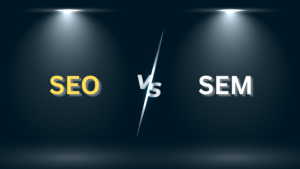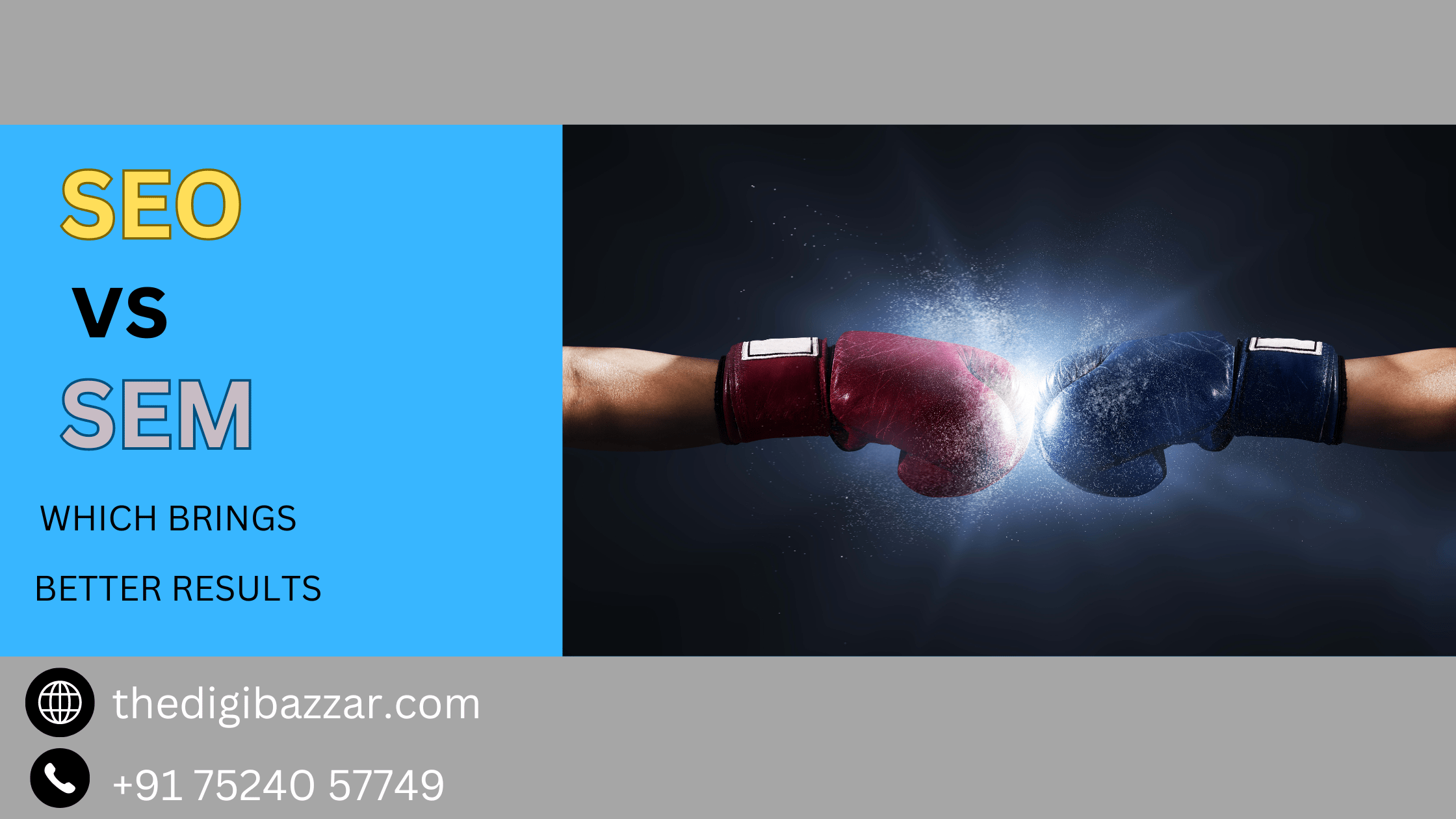SEO vs SEM: Which Brings Better Results?

When we talk about website visibility, we’re often referring to how well a website ranks on search engines like Google. But how does a website achieve a top spot? The answer lies in understanding two key strategies: Search Engine Optimization (SEO) and Search Engine Marketing (SEM). Both aim to boost visibility, but they do so in different ways. So, which one brings better results? Let’s dive into the SEO vs SEM discussion to find out.
What is SEO?
SEO (Search Engine Optimization) is all about optimizing your website to appear higher in organic search results, which means you don’t pay for these placements. This process includes selecting relevant keywords, improving the quality of your content, building backlinks, and ensuring your site runs smoothly. Think of SEO as a marathon—it takes time and effort to see results, but the benefits are long-lasting.
In the context of the Difference Between SEO and SEM, SEO focuses on gaining traffic naturally, without paying for ads. This organic approach builds trust and credibility, as many users prefer clicking on non-ad results. However, climbing up the ranks through SEO can be slow and requires continuous effort to maintain and improve your position.
What is SEM?
SEM (Search Engine Marketing), by contrast, involves paid strategies like pay-per-click (PPC) advertising. This approach allows businesses to display ads on search engine results pages (SERPs), typically above or beside organic results. You pay each time someone clicks on your ad, hence the term PPC.
When considering the SEO vs SEM Strategy, SEM is more like a sprint—it can deliver quick visibility and immediate traffic. This is particularly beneficial for new websites or businesses with time-sensitive campaigns. SEM allows for precise targeting, so you can reach specific audiences based on demographics, location, and even browsing behavior.
SEO vs SEM: Pros and Cons
Each approach has its strengths and weaknesses, making the SEO vs SEM pros and cons discussion vital for businesses deciding where to invest their resources.
Pros of SEO:
• Cost-Effective in the Long Run: After the initial setup and optimization, maintaining a good SEO standing requires less investment.
• Credibility and Trust: Users often trust organic results more than ads, seeing them as more authentic.
• Sustainable Traffic: Once established, organic traffic can provide a steady flow without ongoing costs.
Cons of SEO:
• Time-Consuming: It takes time to build and improve organic rankings.
• Complexity: SEO involves a lot of moving parts, including technical aspects and content creation, which require expertise.
Pros of SEM:
• Immediate Visibility: Your ads can appear at the top of search results as soon as your campaign starts.
• Targeted Advertising: SEM allows for precise audience targeting, maximizing your ad spend efficiency.
• Flexible and Scalable: Campaigns can be easily adjusted based on performance and budget.
Cons of SEM:
• Cost: SEM can be expensive, especially in competitive markets where bid prices for clicks are high.
• Temporary Results: Traffic stops once you stop paying for ads, unlike the lasting impact of organic SEO.
SEO vs SEM: Cost Comparison
When comparing the costs, SEO vs SEM cost comparison reveals a fundamental difference. SEO often involves upfront investments in content creation, website optimization, and ongoing improvements. However, once you rank well, the maintenance costs are relatively low. In contrast, SEM requires continuous spending on ads to maintain visibility. While SEM can be costly, it provides immediate results, which can be crucial for new businesses or specific campaigns.
Conclusion
Choosing between SEO and SEM depends on your business goals, budget, and timeline. SEO is ideal for building long-term, sustainable traffic and credibility, while SEM offers quick results and precise targeting. Often, a balanced approach that combines both strategies can be the most effective, leveraging the strengths of each to maximize your online visibility.
Ultimately, the best strategy aligns with your specific needs and resources. As digital marketing evolves, staying informed and adaptable will help you navigate the complexities of SEO and SEM, ensuring your website remains visible and competitive.
